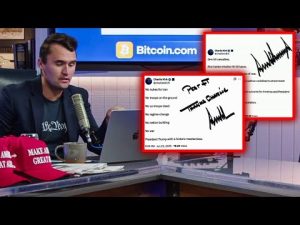In the whirlwind world of finance, nothing seems to have everyone’s attention quite like the Federal Reserve. It appears the central bank is having a bit of a temper tantrum, and some are blaming it on none other than former President Donald Trump. Steve Forbes, a well-known name in the financial realm, recently pointed out that the Fed is behaving as if it’s in a soap opera — fraught with drama and, dare we say, a sprinkle of personal vendetta.
Forbes claims the Fed is stubbornly refusing to lower interest rates, seemingly out of spite for Trump’s constant cheerleading for rate cuts. It seems that they’re not keen on giving him a win, and an election is just around the corner. The timing is oh-so-convenient for the Democrats, but the Fed has played its cards close to its chest ever since Trump began his second term. The baffling part? Inflation rates have dipped since last year. So why the resistance? It’s unsettling to think that animosity might be influencing decisions that impact the entire nation’s economy.
Things get more intriguing when you peek behind the curtain of the Federal Reserve. For decades, their mentality has been to rein in the economy whenever it starts to sizzle. They see prosperity as a ticking time bomb of potential inflation. Their team, armed with PhDs and housed in various locations, somehow believes that if the economy grows too hot, it’s their job to cool it down, even if that means sending us into recession. The logic here is reminiscent of trying to cool down a boiled pot of water by turning the heat down and holding on for dear life while waiting for it to start bubbling again. The reality is, when people earn more, they generally spend more — so why not let that happen instead of pulling the reins?
In a world powered by free markets, things don’t just spiral out of control. If prices climb too high, people cut back on spending, and producers will adjust prices or improve products. Think about it – have you seen how much smartphones have advanced, compared to those clunky, overpriced cell phones from decades ago? Free markets respond to demand naturally, yet the Fed seems determined to meddle rather than let the economic gears turn smoothly.
Forbes noted a curious stance from Jerome Powell, the Federal Reserve chair, regarding tariffs, which he claims might push prices higher. So, the Fed suggests that instead of *addressing* the issue, it’s better to keep interest rates high to lower demand. Wait, what? That’s like getting a flat tire and deciding the best course of action is to drive slower rather than fix the tire! The Fed is mixing apples and oranges by not distinguishing between government-induced price changes and natural market fluctuations.
So, what’s the remedy in this chaotic scenario? Forbes contends that it’s time for a serious shake-up at the Fed. He suggests that the next head of this institution needs to pull a “dogelike intervention” to change how things are run. That would mean bringing in fresh perspectives to challenge the entrenched, misguided thinking. He encourages current administration officials to make a strong case against the Fed’s outdated assumptions on monetary policy. It’s time to take a closer look and put the focus back on stabilizing the dollar rather than playing political games. The financial world awaits, holding its breath, while the Fed tries to figure out which way is up.







